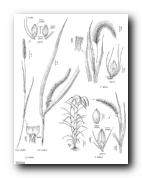
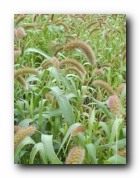
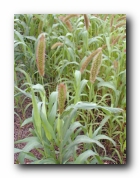
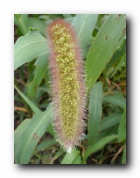
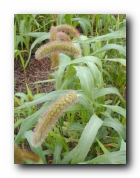
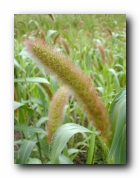
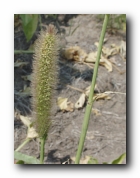
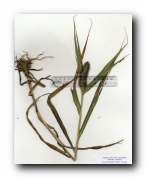
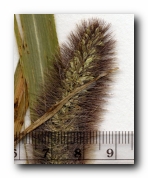
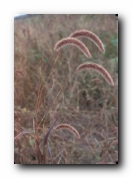
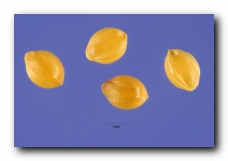

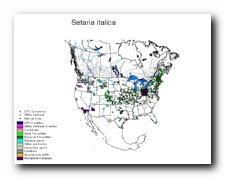
40" Rows: Broadcast:
15 to 20 pounds pure live seed per acre
20 to 25 pounds pure live seed per acre
Loam:
Clay:
Low
High
High
Habit: Stout, erect, somewhat glaucous annual, the cultivated form of Setaria viridis. Culms: Simple or branched at the base, 50-150 cm. tall, scabrous below the panicle, nodes bearded. Blades: Lanceolate, 20-40 cm. long, 6-25 mm. wide, scabrous on both sides, and margins, narrowed at both ends. Sheaths: Overlapping, ciliate on the margins, pubescent at the collar. Ligule: A ring of stiff hairs 1-2 mm. long. Inflorescence: Panicle compound, interrupted at base, thick, erect or nodding, 8-20 (30) cm. long, and 3 cm. thick, but in escaped specimens smaller, yellowish, greenish or purplish, rachis densely villous, bristles 1 (2-3) to each spikelet, upwardly barbed, 1-3 times as long as the spikelet. Spikelets: About 3 mm. long. Glumes: First ovate, 3-nerved, about one third as long as the spikelet, the second and sterile lemma 5-7-nerved, the glume about three fourths as long as the spikelet, the sterile lemma longer than the fruit. Fruit: Tawny to red brown, or black, deciduous from the glumes and sterile lemma, planoconvex, finely transversely wrinkled or ridged. Habitat: Waste places and fields; escaped from cultivation. July-September. Remarks: The smaller forms are known as Hungarian grass.
Special Notes: